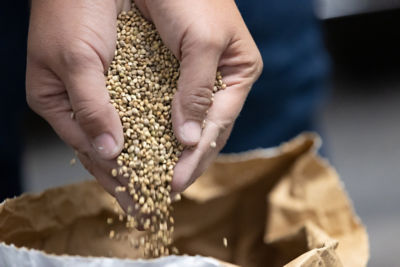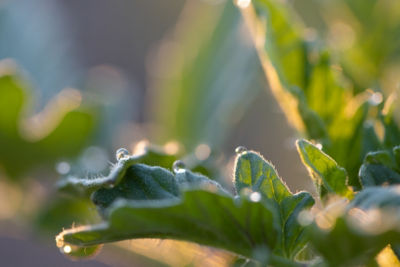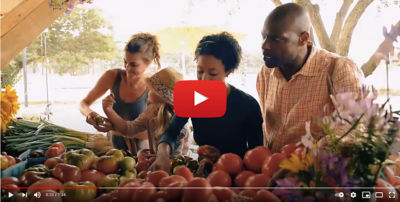
Click here to download a PDF version of this guide.
Soil-dwelling nematodes are often out of sight and out of mind. It's time to take notice.
Root-knot nematodes bore through root cell walls and begin living, feeding, and wreaking havoc inside the root vascular system.
Click here to download a PDF version of this spotlight.
Soil-dwelling nematodes are often out of sight and out of mind. It's time to take notice.
Root-knot nematodes bore through root cell walls and begin living, feeding, and wreaking havoc inside the root vascular system.
Did you know that 68% of sampled vegetable fields in the California and Tennessee mountains are infested with root-knot nematode?
With an average population of over 1.900 RKN/500cc soil, this well exceeds established threshold levels in vegetables.
RKN may silently reduce yields with little or no visual symptoms, stunting, wilting, and chlorosis may be observed due to an impaired root system. Nematode damage on roots also creates entry points for other soilborne pathogens like Fusarium and Verticillium.
In the tomato picture to the right, we see increased severity of bacterial wilt in a RKN susceptible hybrid (right) vs. a RKN resistant hybrid (left).
RKN may silently reduce yields with little or no visual symptoms, stunting, wilting, and chlorosis may be observed due to an impaired root system. Nematode damage on roots also creates entry points for other soilborne pathogens like Fusarium and Verticillium.
In the tomato picture to the right, we see increased severity of bacterial wilt in a RKN susceptible hybrid (right) vs. a RKN resistant hybrid (left).

 The image above was captured from an internal block trial in 2022 from one field location in South Carolina.
The image above was captured from an internal block trial in 2022 from one field location in South Carolina.
The graph displayed to the below shows RKN populations at harvest on a resistant hybrid vs. a susceptible hybrid from a trial conducted by Clemson University in South Carolina1
RKN populations can be significantly reduced by planting a resistant variety, resulting in less crop damage and increased yields in areas of high RKN pressure.
The graph displayed to the right shows RKN populations at harvest on a resistant hybrid vs. a susceptible hybrid from a trial conducted by Clemson University in South Carolina1
RKN populations can be significantly reduced by planting a resistant variety, resulting in less crop damage and increased yields in areas of high RKN pressure.
 1 Thies, Judy A., et al. "Host Resistance and Metam Sodium for Managing Root knot Nematodes in a Pepper Cucumber Rotation." HortScience 40.7 (2005): 2080 2082.
1 Thies, Judy A., et al. "Host Resistance and Metam Sodium for Managing Root knot Nematodes in a Pepper Cucumber Rotation." HortScience 40.7 (2005): 2080 2082.
Did you know that 68% of sampled vegetable fields in the Carolina and Tennessee mountains are infested with root-knot nematode?1
With an average population of over 1,900 RKN/500cc soil, this well exceeds established threshold levels in vegetables.2
 1 Based on internal sample collection from 50 fields. Identification performed by the NC Department of Agriculture Nematode Assay Section. 2 Based on published threshold levels by Clemson University.
1 Based on internal sample collection from 50 fields. Identification performed by the NC Department of Agriculture Nematode Assay Section. 2 Based on published threshold levels by Clemson University.

Additional Information
KEY TO DISEASE RESISTANCE
*Disease Key: ToMV = Tomato mosaic virus, Sb/Sl/Ss = Gray leaf spot, Va/Vd = Verticillium wilt, Aal = Alternaria stem canker , Fol = Fusarium wilt, TSWV = Tomato spotted wilt virus, Ma/Mi/Mj = Root-knot, TYLCV = Tomato yellow leaf curl virus, Lt = Powdery mildew, Pst = Bacterial speck, Pf = Leaf mold
*HR = High Resistance. IR = Intermediate Resistance. To find out more about disease resistance and the applicable levels of disease resistance, visit www.worldseed.org, and view the “Definition of the Terms Describing the Reaction of Plants to Pests for the Vegetable Industry” paper in the Vegetable Resources section. Performance may vary, from location to location and from year to year, as local growing, soil and weather conditions may vary. Growers should evaluate data from multiple locations and years whenever possible and should consider the impacts of these conditions on the grower’s fields. Bayer, Bayer Cross, Seminis & Leaf Design® and Seminis® are registered trademarks of Bayer Group. ©2023 Bayer Group. All rights reserved.
KEY TO DISEASE RESISTANCE
*Disease Key: ToMV = Tomato mosaic virus, Sb/Sl/Ss = Gray leaf spot, Va/Vd = Verticillium wilt, Aal = Alternaria stem canker , Fol = Fusarium wilt, TSWV = Tomato spotted wilt virus, Ma/Mi/Mj = Root-knot, TYLCV = Tomato yellow leaf curl virus, Lt = Powdery mildew, Pst = Bacterial speck, Pf = Leaf mold
*HR = High Resistance. IR = Intermediate Resistance. To find out more about disease resistance and the applicable levels of disease resistance, visit www.worldseed.org, and view the “Definition of the Terms Describing the Reaction of Plants to Pests for the Vegetable Industry” paper in the Vegetable Resources section. Performance may vary, from location to location and from year to year, as local growing, soil and weather conditions may vary. Growers should evaluate data from multiple locations and years whenever possible and should consider the impacts of these conditions on the grower’s fields. Bayer, Bayer Cross, Seminis & Leaf Design® and Seminis® are registered trademarks of Bayer Group. ©2023 Bayer Group. All rights reserved.
For additional agronomic information, please contact your local seed representative. Bayer, Bayer Cross and Seminis® are registered trademarks of Bayer Group. ©2023 Bayer Group. All rights reserved. BAYER GROUP DOES NOT WARRANT THE ACCURACY OF ANY INFORMATION OR TECHNICAL ADVICE PROVIDED HEREIN AND DISCLAIMS ALL LIABILITY FOR ANY CLAIM INVOLVING SUCH INFORMATION OR ADVICE.



